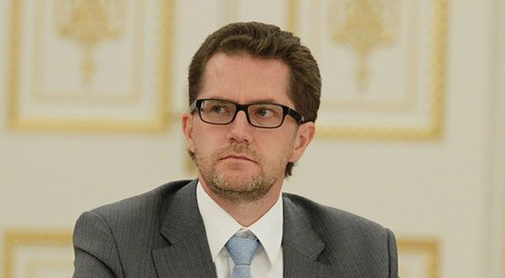Service functions
Opening address of Kirill Androsov, Chairman of the Board of Directors of Russian Railways

Dear sirs,
In 2013, an important step was taken by the Board of Directors which defined the direction of the company’s future development – the approval of Russian Railways’ development strategy up to 2030.
Russian Railways is adopting a new business model and becoming an international transportation
and logistics company. This will allow us to not only improve the efficiency and competitiveness of the business, but also strengthen Russia’s overall international logistics rating.
Realising Russian Railways’ potential in global markets presents new challenges for the Company’s management as its new objectives and business philosophy call for the implementation of new corporate governance and management structures. Under the new system, we will see a change in responsibilities relating to the achievement of strategic development goals, not only for head office executives, but also executives from the different business units, directorates and subsidiaries, in line with a new set of key performance indicators.
Continuous interaction with federal and regional legislative authorities, as well as consideration of the Company’s budgets and the investment programmes of the Russian Federal Government (which founded Russian Railways), are important components of the Company’s corporate governance.
The Government reviews and approves the Company’s financial plan and investment programme annually; Russian Railways is the only infrastructure company that has been openly submitting its plans to the Cabinet Council for several years.
Last year, public, expert technological and price audits of Russian Railways’ investment projects were conducted for the first time, and a unified corporate standard for such practices was adopted. This increased scrutiny of the Company’s investment projects was driven by several significant recent government decisions Which were related to the development of a Moscow transportation hub.
This will include upgrades to the existing railway facilities and infrastructure using modern scientific
and technological processes, as well as an infrastructure development project of unprecedented scale
on the network’s key eastern railways: the Trans-Siberian and Baikal-Amur Mainlines.
The Russian Railways investment programme includes a number of components, such as the development of heavy vehicles, the introduction of innovative rolling stock with modern automated systems of control, and the use of GLONASS technology to create infrastructure monitoring and traffic management systems.
In 2013, despite the stagnant economy, the pace of railway infrastructure construction slowed very little.
I would like to thank all those involved in the construction for dedicating themselves to adhering to deadlines and quality standards while implementing major transportation projects, including transport services for the XXVII World Summer Universiade in Kazan, the XXII Winter Olympic Games
and XI Paralympic Winter Games 2014 in Sochi.
Going forward, the Company expects to achieve maximum efficiency in the use of its resources; including design, capital investment, and the operation of infrastructure. Today, we are working on testing the mechanisms of our financial and technological audits, our banking and construction supervision,
and the agreement mechanisms between large investment companies and network users.
Another vital issue is attracting private funds for the development of public railway infrastructure. This requires a systemic solution, and must include the removal of legislative restrictions on Russian Railways’ real estate turnover, and the adoption of provisions relating to interaction between railway transport infrastructure owners and service users, based on long-term agreements. We expect these changes to motivate private investors to invest in the construction and renovation of public railway infrastructure.
Attracting private investors to locomotive- hauled services is more of a challenge. While implementing pilot projects in this field, we intend to determine a new and effective model of traffic management based on the models used in other countries. This important issue involves a number of different parties; however, the Government’s approach, which centres on reliability, safety and speed, will remain our priority.
Russian Railways’ top priority is to ensure the sustainable, secure and safe operation of the railway infrastructure, and its development, in the interests of the state. These are very complex tasks, given the scale of Russia’s territory and railway infrastructure. Russian Railways is also a commercial entity that is committed to ensuring the financial sustainability of its operations, and the protection of the interests of creditors and shareholders. I am certain that we will be able to realise our plans through the active involvement of the Company’s partners in our business processes, by actively working with the government of the Russian Federation, through expansion (including into international markets),
and by continuously boosting our competitiveness.
